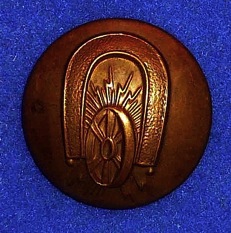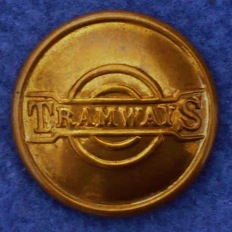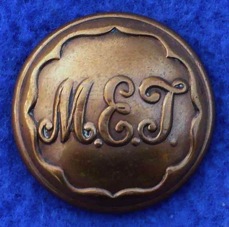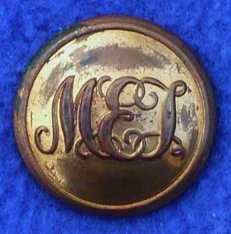Metropolitan Electric Tramways
Owner Metropolitan Electric Tramways and Omnibus Company Limited (a close associate of the North Metropolitan Tramways Company)
Taken over 1st October 1901 (British Electric Traction Company Limited)
Name changed 15th January 1902 to Metropolitan Electric Tramways Limited
Took over 26th November 1902 (North Metropolitan Tramways [horse; battery electric])
Took over (operation) 26th November 1902 (North Metropolitan Tramways) - lines within Middlesex now owned by Middlesex County Council
First electric route 22nd July 1904
Took over (operation) 24th August 1904 to 28th February 1911 (all new lines built by Middlesex County Council)
Took over (operation) 22nd December 1905 (London County Council Highgate Archway to Highgate Tavern line)
Took over 16th August 1906 (Harrow Road and Paddington Tramways Company [horse])
Last horse tram service 1st September 1906
Took over (operation) 28th March 1907 and 17th April 1908 (lines built by Hertfordshire County Council)
Taken over 18th October 1909 (London County Council) - Lockbridge to Plough Lane line)
Ownership transferred (95%) 1st January 1913 (London and Suburban Traction Company Ltd - a holding company jointly owned by the Underground Electric Railways Company of London Limited and the British Electric Traction Company Limited)
Taken over 1st July 1933 (London Transport) - remaining routes
Length 53.51 miles
Gauge 4ft 8½ins
Button description (Pattern 1) Wheel, magnet and electrical flashes
Materials known Brass; chrome; nickel; black horn
Button Line reference [113/16]
Button description (Pattern 2) TRAMWAYS ‘bar and circle’ device within a raised rim.
Materials known Brass
Button Line reference [114/72]
Comment The Pattern 1 button is the standard BETCo issue, which seems to have been issued to all systems that were owned or leased by the BETCo. Evidence that the button was in fact issued to MET staff comes from 'Metropolitan Electric Tramways Volume 2, 1921-1933', C S Smeeton; Light Rail Transport Association (1983), ISBN: 0 948106 00X.
The Pattern 2 button would appear to have been issued to the MET — along with 'London United Tramways' and SMET — shortly after the end of the Great War. All three tramway companies had effectively been merged — under the umbrella of a holding company (the 'London & Suburban Traction Company Ltd') — over a six-month period between January (LUT and MET) and June 1913 (South Metropolitan Electric Tramways). Although they continued to maintain their individual identities, from 1915 onwards they were actively administered as a single entity, with some attempts at standardisation (e.g. uniforms) being undertaken.
The 'London & Suburban Traction Company Ltd' was jointly owned by the 'Underground Electric Railways Company of London Ltd' (UERL) and BETCo, the latter having owned the MET from its inception. The UERL had previously merged with the 'London General Omnibus Company' (15th January 1912), and had then gone on to acquire full control of two further underground railways (The City and South London Railway and The Central London Railway). This 'combine' came to be known as the 'Underground Group'. On 1st January 1913, the MET was formally transferred to the 'London & Suburban Traction Company Ltd', along with its BETCo-owned sister, the Tramways (M.E.T) Omnibus Company Ltd, and the UERL-owned London United Tramways (LUT); BETCo's remaining London tramway (the SMET) followed suit on the 14th June 1913. Although the UERL had a majority stake in the L&STCo, administrative control of the three tramways was initially placed in the hands of the BETCo; this changed on the 1st May 1915, when administration was passed to the UERL, so that all three effectively now came under the sway of the Underground Group. In November 1928, the BETCo sold its remaining 5% share in the MET, as well as its holdings in the L&STCo to the UERL.
The precise origins of the London Underground 'bullseye' logo used on the Pattern 2 button are still not entirely clear. The distinctive lettering (larger first and final letters) was a design promoted by the District Railway (a 'UERL' company) in 1908 as a means of 'branding' London's underground railways (not just the District Railway). At the same time, the District Railway also began to introduce station signage which is clearly recognisable as the forerunner of the later 'bullseye' logo. This consisted of a blue horizontal bar with the station name in white lettering, overlain on a solid red circle - the design of which was said to have been greatly influenced by the London General Omnibus Company's emblem (a spoked wheel with the word 'GENERAL' displayed across it). Although the iconic 'UNDERGROUND' bar and circle roundel (with a ring as opposed to a solid circle) began to appear on publicity material from around 1912, it was not formally registered until 1917 and only after that did it start to appear on stations. It was subsequently used throughout the Underground Group's enterprises (railways, buses, tramways, electricity supply companies), and was subsequently adopted by London Passenger Transport Board following the take over in 1933.
I've also provided images of two further buttons for comparative purposes: ‘M.E.T’ script initials within a scalloped rim (Button Lines 114/47) and ‘MET’ script initials. The former is almost certainly an issue of the ‘Tramways (MET) Omnibus Company Ltd’, the bus-operating arm of the MET, and wholly owned by them. It is identical in form to those issued by several other London omnibus operators, namely: ‘Gearless’, ‘British’, ‘General’ and ‘Central’. Note that this button is erroneously stated to be an issue of the Metropolitan Railway in David Froggatt’s book, 'Railway Buttons, Badges and Uniforms’. Although a photo of the correct pattern Metropolitan Railway button was subsequently included in ’Supplement 1’ of that book (the last button illustrated here), it still misattributes the original button (ie, the ‘M.E.T’ button) to the Metropolitan Electric Tramways.



